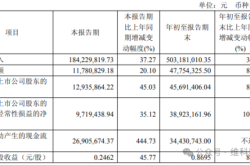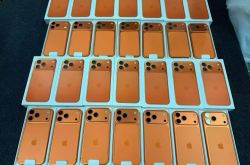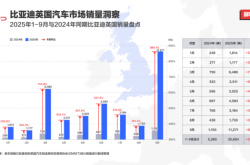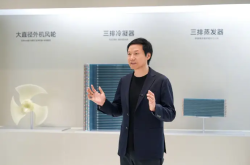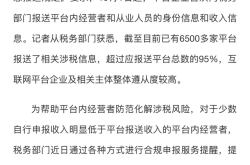"Hangzhou Six Dragons" Qunhe Technology Rushes for IPO: Needs Listing to "Replenish Blood"
![]() 03/19 2025
03/19 2025
![]() 590
590
The highly anticipated "Hangzhou Six Dragons" has finally embarked on its initial public offering (IPO) journey.
On February 14, Manycore Tech Inc., the holding company of Hangzhou Qunhe Information Technology Co., Ltd. (hereinafter referred to as "Qunhe Technology"), one of the Six Dragons, officially submitted a listing application to the Hong Kong Stock Exchange, aiming to list on the Hong Kong main board. Should Qunhe Technology successfully list on the Hong Kong Stock Exchange this time, it is poised to become "the world's first spatial intelligence stock".
According to Securities Star, this is not Qunhe Technology's first attempt at an IPO. In 2021, it planned to list on Nasdaq but abandoned its US stock listing plan in early 2023, two years later. In recent years, Qunhe Technology has gained prominence in the home decoration design field with its "Coolhome" platform. Relying on its ultra-high user retention rate, the company's performance has increased annually, and its high gross margin of nearly 80% has garnered favor from renowned capital firms.
However, in recent years, the company's expenses have remained high. In the latest reporting period, its marketing expense ratio was nearly 45%, and the company has actually been in a dilemma of consecutive years of losses. Given its high research and development (R&D) and marketing model, if the company wishes to further expand its operations, it must reopen the IPO route.
01. Ultra-high expenses have led to consecutive losses for the company
Public information reveals that Qunhe Technology was founded in 2011 and is headquartered in Hangzhou, Zhejiang. It is a spatial intelligence enterprise grounded in artificial intelligence (AI) technology and a dedicated graphics processing unit (GPU) cluster. However, Qunhe Technology's most renowned product is the spatial design software "Coolhome".
As a "lazy tool" for home decoration design, Coolhome initially provided technical support such as rapid rendering for designers. Over the past decade since its establishment, through the acquisition of platforms like Modelo and Meijian, its business has gradually encompassed multiple fields including home furnishing, public decoration, real estate, and construction. Its platform functions have also expanded to various aspects such as design rendering and marketing display.
From 2022 to the end of the third quarter of 2024 (hereinafter referred to as the "reporting period"), Qunhe Technology's revenue reached 601 million yuan, 664 million yuan, and 553 million yuan, respectively, demonstrating decent performance. However, within the past three years, Qunhe Technology has still incurred losses. In 2022, 2023, and the first nine months of 2024, the company suffered losses of 704 million yuan, 646 million yuan, and 422 million yuan, respectively. The adjusted net losses were 338 million yuan, 242 million yuan, and 94 million yuan, respectively.
The company explained that these losses were mainly due to substantial investments in product development, technical support, and product marketing to drive rapid and long-term business growth. Securities Star notes that in recent years, Qunhe Technology's various expenses have been relatively high.
For instance, in 2023, when the company's revenue was 664 million yuan, its marketing expenses amounted to 356 million yuan, accounting for up to 53.7%. The proportion in 2022 also reached 53.4%. It was not until the first three quarters of 2024 that the proportion of marketing expenses slightly improved, dropping to 44.9%, but it was still at a high level.
During the reporting period, its administrative expenses have shown improvement in recent years, with expenditures of 111 million yuan, 96 million yuan, and 77 million yuan, respectively. The proportion in revenue decreased from 18.6% to 13.9%.
It is worth mentioning that as a software enterprise, Qunhe Technology's R&D costs have always accounted for a relatively high proportion. In 2022, they accounted for 72.9% of revenue, reaching 437 million yuan. Although they declined afterward, they amounted to 390 million yuan and 263 million yuan in 2023 and the first three quarters of 2024, respectively, accounting for 58.9% and 47.6% of revenue. However, it is evident that in this industry where significant technological innovations are challenging, enterprises still need to continuously invest manpower in product maintenance and upgrades.
Despite the immense financial pressure, as a technology company, Qunhe Technology believes that talent is paramount. In the first three quarters of 2024, Qunhe Technology's salary costs exceeded 400 million yuan, accounting for almost three-quarters of total revenue.
During the reporting period, Qunhe Technology paid and awarded compensation to directors amounting to 9.8 million yuan, 9.4 million yuan, and 6.5 million yuan, respectively. The salaries paid to R&D personnel by the company were 407 million yuan, 365 million yuan, and 250 million yuan, respectively, accounting for 67.8%, 55.0%, and 45.3% of total revenue.
As of September 30, 2024, Qunhe Technology had 615 R&D personnel, with an average cost of over 387,000 yuan per person. In the first nine months of 2024, there were 132 administrative personnel with a total salary of 55.079 million yuan, an average cost of over 417,000 yuan per person. There were also 492 sales and marketing personnel with a total salary of 190 million yuan, an average cost of over 386,000 yuan per person. Additionally, there were 149 operations personnel with a total salary of 21.877 million yuan, an average cost of over 146,000 yuan per person.
Qunhe Technology stated that the nature of the business, continuous R&D capabilities, and the company's growth strategy are the primary factors leading to the company's operating losses. Regarding future profitability, the company said it needs to continue expanding its customer base, increasing the lifetime value of users, managing costs, and improving operational efficiency to achieve long-term profitability.
02. Four years without financing; needs listing to "replenish blood"
It should be noted that despite being in a loss state, Qunhe Technology's book funds are not unattractive. From 2022 to the first three quarters of 2024, Qunhe Technology's net cash flow from operating activities was -412 million yuan, -214 million yuan, and -164 million yuan, respectively, and has yet to achieve positive cash inflows. According to the prospectus, as of the first nine months of 2024, the company's time deposits, cash, and cash equivalents totaled over 400 million yuan.
The main reason for this is the substantial capital support it has received behind the scenes. As a start-up platform company, a large amount of capital is required for early-stage development. Data shows that since 2013, Qunhe Technology has completed 8 rounds of financing, raising over $430 million.
Examining its shareholder lineup, it can be described as "star-studded." Among Qunhe Technology's shareholders are not only Shunwei Capital, controlled by Xiaomi's Lei Jun, but also renowned capital firms such as Hillhouse Capital, IDG Capital, GGV Capital, and Matrix Partners China. According to other media reports, when Qunhe Technology rushed to the US stock market in 2021, its valuation had reached $2 billion, equivalent to approximately 14.5 billion yuan.
Some believe that although Qunhe Technology is a leading enterprise in the home design industry, compared to titles such as China's leading and the world's largest cloud design software, the capital market values Qunhe Technology more for its huge user base and high gross margin.
According to the prospectus, from 2022 to the first nine months of 2024, the company's gross margin was 72.7%, 76.8%, and 80.4%, respectively. In other words, the company can achieve a profit margin of up to nearly 80%.
According to the prospectus, the average monthly active visitors on the company's platform currently stand at 86.3 million, and the average monthly active users have reached 2.7 million. The platform processes millions of renderings and billions of Application Programming Interface (API) calls every day. As of the first nine months of 2024, there were 45,548 enterprise customers and 413,872 individual customers.
Moreover, the company's customers exhibit strong loyalty. As of September 30, 2022, 2023, and 2024, the net revenue retention rates of enterprise customers were 112.3%, 106.0%, and 104.2%, respectively. The net revenue retention rates of major customers were 127.6%, 115.5%, and 114.1%, respectively. During the same period, the net revenue retention rates of individual customers were 81.1%, 106.5%, and 96.0%, respectively.
However, Securities Star has also found that the last round of financing that Qunhe Technology obtained was in 2021, and since then, the company has not received any further financing. It is evident that Coolhome's appeal to capital is gradually weakening. If it cannot obtain funding in a timely manner to "replenish blood," given the company's current cost expenditures, it may struggle to maintain normal operations in the future.
It is worth mentioning that Qunhe Technology's primary customers come from the home decoration and home furnishing industries. Currently, the domestic real estate industry is in a downturn, with weakened investment willingness among real estate companies and declining real estate sales, which have affected companies in the real estate chain, including home decoration and home furnishing.
From a revenue perspective, before the downturn in the real estate industry, Qunhe Technology's revenue growth rate in 2020 was 25.2%. In 2023 and the first three quarters of 2024, the revenue growth rates were 10.5% and 13.8%, respectively, showing a decline compared to 2020.
During the golden age of real estate development, this model may have been able to capitalize on the expansion craze. However, now that the real estate industry is in a downturn, developers are urgently contracting and postponing land acquisition, and design companies are facing difficulties in collecting payments. These factors will inevitably have a certain impact on the company's future operations. (This article was originally published on Securities Star, Author | Yu Ying)
- End -

